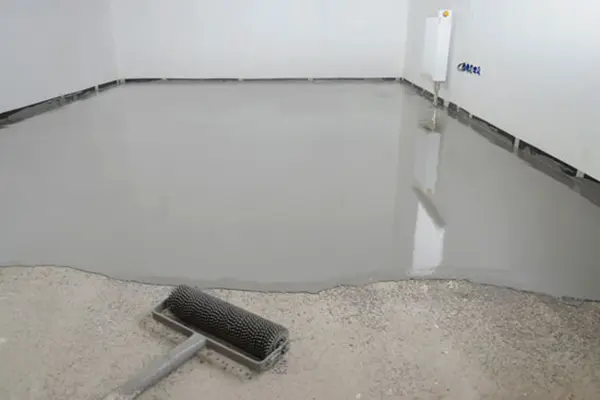Self-Leveling Over Concrete: Creating a Smooth and Level Surface
Self-leveling concrete, also known as self-leveling underlayment or self-leveling compound, is a versatile and effective way to achieve a smooth, level surface for various flooring applications. It is commonly used over existing concrete floors to prepare them for the installation of tiles, hardwood, carpets, or other flooring materials.
Understanding Self-Leveling Concrete
Self-leveling concrete is a cementitious mixture that incorporates special additives to enhance its fluidity and self-leveling properties. When poured onto a prepared surface, it flows evenly, filling in low spots and creating a smooth, flat finish. This eliminates the need for extensive manual leveling and sanding, making it a time-saving and efficient solution.

Compatibility with Concrete Subfloors
Self-leveling concrete can be applied over various types of concrete subfloors, including new and existing concrete slabs. However, there are some considerations for ensuring proper adhesion and preventing problems:
-
Surface Preparation: The concrete surface must be clean, dry, and free from contaminants, such as old paint, grease, or curing compounds. Proper surface preparation is crucial for ensuring a strong bond between the self-leveling concrete and the existing subfloor.
-
Moisture Control: Excessive moisture in the concrete subfloor can lead to bonding failures and cracking in the self-leveling layer. It is essential to test the moisture content of the concrete and address any moisture issues before applying the self-leveling concrete.
-
Primer Application: In some cases, a primer may be recommended to enhance adhesion between the self-leveling concrete and the subfloor. The type of primer used will depend on the specific conditions of the subfloor.
Self-Leveling Additive for Concrete
For existing concrete floors that require significant leveling, a self-leveling additive can be mixed with traditional concrete to improve its flow and self-leveling properties. These additives typically contain polymer or cementitious components that enhance the concrete’s fluidity and reduce the amount of water needed, preventing shrinkage and cracking.
Considerations for Applying Self-Leveling Concrete
Proper application techniques are essential for achieving a successful and durable self-leveling concrete installation:
-
Mixing and Pouring: Follow the manufacturer’s instructions for mixing the self-leveling concrete and pouring it onto the prepared subfloor. Ensure the mixture is poured in a continuous manner to avoid unevenness.
-
Spreading and De-airing: Use a spiked roller or trowel to spread the self-leveling concrete evenly and de-air the mixture, preventing air bubbles that could compromise the integrity of the finished surface.
-
Curing and Protection: Allow the self-leveling concrete to cure properly according to the manufacturer’s recommendations. Protect the surface from moisture, foot traffic, and extreme temperatures during the curing period.
-
Floor Covering Installation: Once the self-leveling concrete is fully cured and hardened, you can proceed with the installation of your chosen flooring material. Follow the specific installation instructions for the type of flooring you are using.
Conclusion: Enhancing Surfaces with Self-Leveling Concrete
Self-leveling concrete has become an essential tool for creating smooth, level surfaces for various flooring applications. Its ability to flow evenly and eliminate unevenness makes it a time-saving and efficient solution for both professional contractors and DIY enthusiasts. By carefully preparing the subfloor, using appropriate additives when necessary, and following proper application techniques, you can achieve a professional-looking and durable self-leveling concrete finish that will enhance the appearance and functionality of your space.
Post time: 11 月-08-2023




